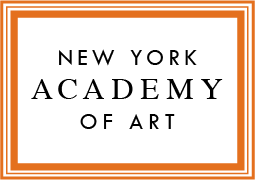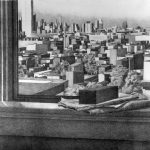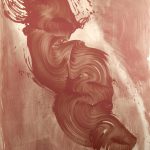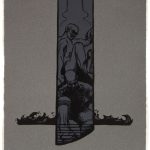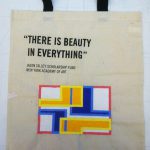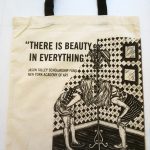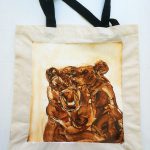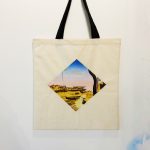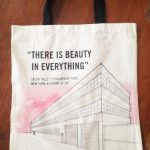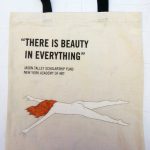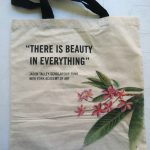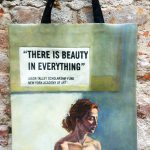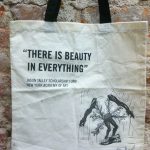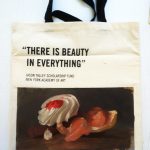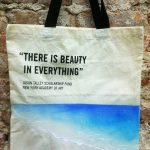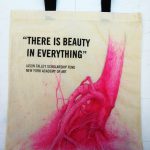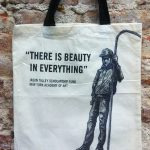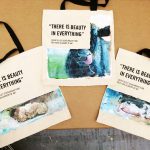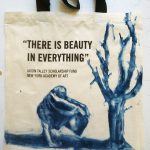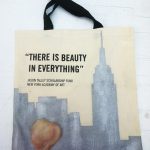FRESH PERSPECTIVES FROM TRIBECA BALL
We were anxious!!! … and there was tons of work to do before, during and after Tribeca Ball. All the studios in the Academy and all the artists were sharp and ready for one of the most successful events in Tribeca. Right before the event started I was taken by a fear and a kind of insecurity. All of my works in my studio walls were in progress and I had no idea about what to expect from the crowd.
| Tribeca Ball attendee John Bowman visited my studio |
| My fellow classmate Eric Pedersen (MFA 2015) and I at the end of the evening |
Next up, I’ll introduce you to more of my classmates and share their views from the studios.
###
2014 Tribeca Film Festival
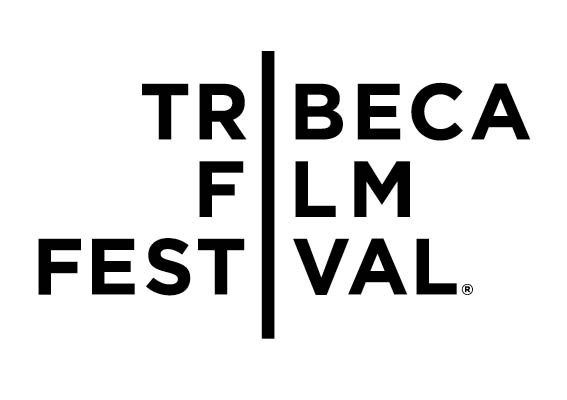
In conjunction with the Tribeca Film Festival, New Yorkers and festival-goers alike will be able to view the artwork of thirteen contemporary artists to be given as prizes to winning Festival filmmakers. Tim Barber, Tony Bennett, Stephen Hannock, Matthew Modine, Catherine Murphy, James Nares, Alexis Rockman, and Clifford Ross have each donated a work, consisting of paintings, photographs and prints.. The exhibition, sponsored by CHANEL, is free and open to the public.
- Tim Barber
- Tony Bennett
- Matthew Modine
- Catherine Murphy
- James Nares
- Alexis Rockman
- Clifford Ross
- Stephen Hannock
Studio Portraits: Yunsung Jang (Fellow 2014, MFA 2013)
Studio Portraits: Jacob Hayes (MFA 2014)
Studio Portraits: Elliot Purse (MFA 2014)
Jason Talley Scholarship Tote Bag Pop-Up
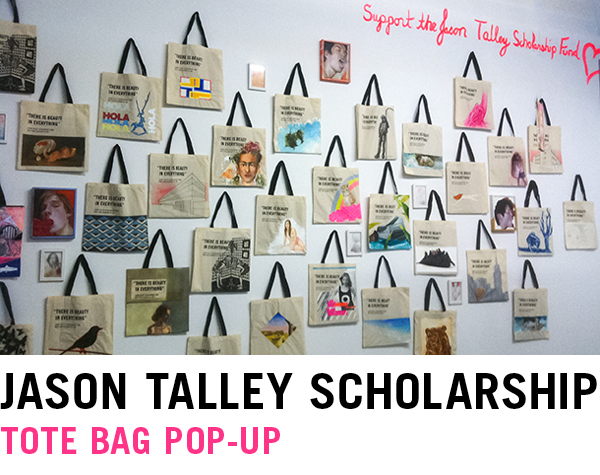
In the spring of 2014, a group of Academy alumni organized a pop-up exhibition to honor Jason Talley (MFA 2008) and raise funds for the Academy scholarship in his memory. The Jason Talley Scholarship Fund Tote Bag pop-up exhibition was on view April 12 and April 25. All tote bags are for sale with 100% of the proceeds going towards the Academy’s Jason Talley Scholarship Fund, created to honor and remember Jason through supporting future Academy artists. THANK YOU to all the artists that supported this project and continue to support the Jason Talley Scholarship Fund.
If you’re interested in purchasing available totes, please contact exhibitions@nyaa.edu or 212-842-5971.
- Meg Atkinson
- Jessica Augier
- Nic Bandy
- Jon Beer
- Carie Bobo
- Jaclyn Brown Talley
- Jessie Brugger
- Fio Cornejo
- Bonnie Dewitt
- Jackie Dingle
- Michelle Doll
- Heidi Elbers
- Mike Gibson
- Elizabeth Glaessner
- Nicolas Holiber
- Aliene Howell
- Caitlin Hurd
- Karl Koett
- Lisa Lebofsky
- Luna Alvaro
- Michael Meadors
- Lily Olive
- Mark Ophirhory
- Yigal Ozeri
- Guno Park
- Nico Sanchez
- Amanda Scuglia
- Steve Shaheen
Studio Portraits: Alicia Brown (MFA 2014)
ADVICE FROM THE CRITICS

On Monday March 24th, Sharon Louden’s Professional Practice Series presented esteemed art critics Roberta Smith (New York Times) and Jerry Saltz (New York Magazine) in conversation with Randy Cohen for “Person Place Thing” in the Academy’s Wilkinson Hall. The room’s walls, recently stripped of the ten “Big Picture” paintings and not yet adorned for Tribeca Ball, were, for once, bare. Guests outnumbered seats, and their excited chatter, along with live bluegrass music by Duncan Wilkel and Eric Robertson, filled the air.
Familiarize yourself with the Met (and art history at large).Before coming to the Academy, I knew very little about art history. I still know relatively little, but do feel that I have a much better understanding of the trajectory after History and Theory of Composition, and Art and Culture 1, which all Academy students are required to take during their first semester.
You cannot see too much.
“We go to 20, 30 galleries a week, and museums on Sundays,” says Saltz. “Galleries and museums are ecstasy machines – you experience your autonomy while looking at an autonomous object, and it’s great.” The couple underlines the importance of going to see the things you don’t like, as much as the shows you do. “The bad shows teach you as much as the good shows, or even more,” says Saltz. “If you go to Chelsea and see a show and think it’s bad, figure out why.”
Copy, and Redefine Skill
In discussing Donald Judd, Smith explained how after emerging from the Whitney Independent Study program, she copied Judd’s writing extensively to better understand it, in terms of both craft and content. Judd was a Renaissance man, “almost as powerful a writer as he was an artist,” she says. “He used words in a way that were unusual but legible.”
Copying to understand applies not only to writing, but of course also to art. Every Academy student is required to complete numerous Master Copies over the course of his or her two years at the Academy. To successfully copy a masterwork is to understand how the artist achieved his or her final product.
What’s challenging is taking the skills learned from copying to the next level. “In this school, you’re learning time-honored skills,” says Saltz. “You need to reinvent them.” A common criticism most art students hear from their teachers is that whatever they’re doing has already been done. “Don’t listen to ‘it’s been done’,” Saltz says. “Instead, do it again. Until you make it yours. Do the American flag until its not Jasper Johns’ anymore: Its yours.”
“All artists are self taught,” says Smith. “So much of what we do is inborn- our handwriting, our voice… Artistry comes in many shapes and sizes.” Saltz advises students to “follow your oddball obsession,” to make all that art that we are specifically impelled to make. “Make your bad art. Honor that part of your work. Do EVERYTHING. Don’t make PRODUCT.”
In short, Saltz and Smith advise us to first understand the variety of options we have as artists, then to make the art that is most meaningful to us as individuals. Although they may not have known it, their advice lines up incredibly neatly with the Academy’s mission. At the New York Academy of Art, “We believe that rigorously trained artists are best able to realize their artistic vision.”
Sounds simple enough, doesn’t it? One final note, from Saltz: “it only takes a lifetime.”
To learn more about Claire Cushman (MFA 2015), take a peak at her bio and recent paintings. Remember, your thoughts are welcomed.
